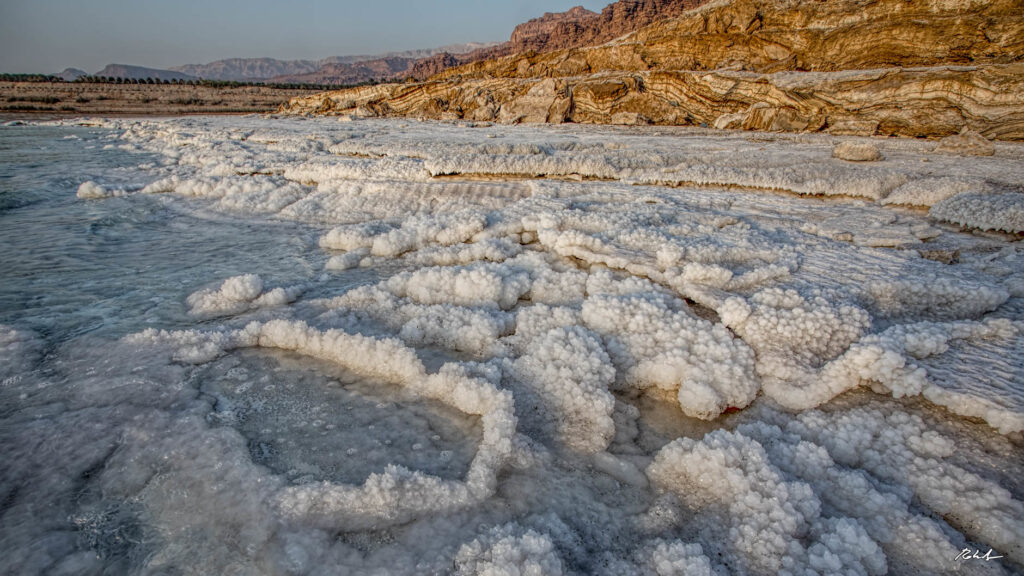Examining the Mediterranean’s past lives & their impact on global climate: Professor Simon George on IODP Expedition 401
Mediterranean–Atlantic Gateway Exchange
Past changes to the gateway between the Mediterranean Sea and Atlantic Ocean created some phenomenal events and changed ocean circulation and chemistry. Scientists will drill down – on land and under sea – to understand the details.
The Mediterranean wasn’t always as it is today.
Instead of today’s narrow opening onto the Atlantic at the Strait of Gibraltar, 8 million years ago there were two broad gateways – one in modern-day northern Morocco, and the other through southern Spain. Over millions of years, these gateways narrowed, eventually closing off the Mediterranean as they were uplifted onto land.


These changes had a dramatic effect on the flow and exchange between the Mediterranean and Atlantic, created extreme salinity fluctuations – at one time a layer of salt crystals 1.5km thick formed in the Mediterranean! – and contributed to major global cooling in the Miocene.
A complete and detailed record of these dramatic changes will be uncovered and carefully examined by the IMMAGE project (Investigating Miocene Mediterranean-Atlantic Gateway Exchange), by using scientific drilling to recover underwater sediment cores on IODP Expedition 401, along with onshore drilling through International Continental Scientific Drilling Program (ICDP).
Simon George, Emeritus Professor at Macquarie University’s School of Natural Sciences, will travel as ANZIC’s expeditioner on 401, from December 2023. Simon is an organic geochemist and sails as one of the expedition’s sedimentologists.
“As a sedimentologist, you’re the first to inspect and interpret the cores as they are brought aboard,” he explains. “You’re seeing metres and metres of sediment – records of these past processes – that no one has ever seen before. It’s a great buzz. A sense of discovery.”
“You’re seeing metres and metres of sediment - records of these past processes - that no one has ever seen before. It’s a great buzz. A sense of discovery.”
Examining the cores will allow the team to reconstruct flow between the Atlantic and Mediterranean as the marine corridors became restricted and closed, while correlating this with climate events, to understand and quantify the global cooling caused by changes to Atlantic–Mediterranean exchange.
“We can analyse the sediments and look for biomarkers, chemicals that are markers of particular biological processes,” Professor George explains. “You can think of them as chemical fossils.”
“We can use them to illuminate the last 15 million years of ocean chemistry and flow in and out of the Mediterranean.”

“I love being on ships. I love being at sea. I love being part of a highly skilled and dedicated team, working towards a common cause.”
“For example, particular chemical markers come from forest fires – they are clues to past climate events.”
The narrowing of the gateways 5–8 million years ago is known to have contributed to a major episode of global cooling. As exchange with the Atlantic decreased, salinity in the Mediterranean increased. This led to the formation of a new, distinct, salty, dense water mass which overspilled into the Atlantic for the first time. This changed the pattern of global ocean circulation and drew CO2 dissolved in surface waters down into deeper parts of the ocean, cooling the climate.
This saline plume that exits the Mediterranean is an important feature of global ocean currents – and climate models – today.
“The IMMAGE project will allow us to pinpoint the time at which this plume first started to exit into the Atlantic and to understand quantitatively its role in Late Miocene global climate and regional environmental change,” explains Professor George.
As the link to the Atlantic became further restricted and the two gateways closed, salinity in the Mediterranean escalated greatly and a salt giant formed – a 1.5km thick layer – during the Messinian Salinity Crisis. The extraction of such a large volume of salt changed global ocean chemistry, with knock-on effects in the global carbon cycle, further cooling the globe.
“We aim to recover a complete record of Atlantic-Mediterranean exchange before, during and after the Messinian Salinity Crisis and to evaluate the causes and consequences of this extreme oceanographic event – locally, regionally and globally,” he says.
IMMAGE will span over a decade and involve a budget exceeding £20 million ($38.5 million). The Land-2-Sea project is a truly ground-breaking initiative, embarking on the first ever coordinated offshore-onshore drilling.
It’s a journey that Simon George – and ANZIC – are thrilled to be a part of.
“I love being on ships. I love being at sea. I love being part of a highly skilled and dedicated team, working towards a common cause.”
“What you find doesn’t just tell you about the past, it informs the future.”
Find out for yourself!
Talk to Simon, and fellow expeditioners, live at sea!
Find out more
IODP Expedition 401: Expedition page and Scientific Prospectus. Stay up-to-date as the expedition sails with the Expedition Blog or follow JOIDES Resolution on X (formerly Twitter), Facebook, and Instagram.
IMMAGE: Webpage and Twitter feed.
ICDP: Project page, proposal abstract.


